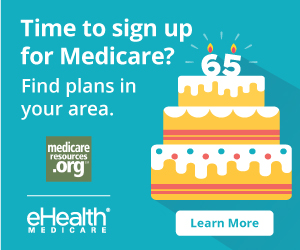Please provide your zip code to see plans in your area.
Since 2011, we've helped more than 5 million visitors understand Medicare coverage.
Find Medicare plans that fit your needs.*
Enroll in a plan today.
* By shopping with our third-party insurance agency partners. You may be in contact with a licensed insurance agent from an independent agency that is not connected with or endorsed by the federal Medicare program.
We do not offer every plan available in your area. Any information we provide is limited to those plans we do offer in your area. Please contact Medicare.gov or 1–800– MEDICARE to get information on all of your options.

Reviewed by our health policy panel.
Medicare Savings Programs (MSP) can help with Medicare premiums and with out-of-pocket costs.
Medicare Savings Programs (MSP) can pay Medicare Part A and Medicare Part B premiums, deductibles, copays, and coinsurance for enrollees with limited income and limited assets. There are four different types of MSPs, and they provide varying benefits. Two of the MSPs only help to pay Medicare Part B premiums (but not Part A premiums or Medicare cost sharing), and one MSP helps disabled working individuals pay their Part A premiums.
The four types of Medicare Savings Programs each have different requirements in terms of the financial situation that will make a person eligible, including income limits and asset (resource) limits. These are federal standards; states can have more generous guidelines for MSPs, and several don’t use asset limits (in other words, they base eligibility on income alone).
As of 2023, the federal asset limits for most MSPs are $9,090 for an individual, and $13,630 for a couple (again, states can set higher limits or not impose an asset limit). Your home, one car, a burial plot, and household items are not counted as assets.
But the federal income limits are different for each type of MSP (these income limits are for the continental U.S.; income limits are higher in Alaska and Hawaii):
If you qualify for QMB, SLMB, or QI, you’ll also receive Extra Help, a federal program that lowers prescription drug and premium costs under Medicare Part D.
Here’s more information about MSPs, including the federal income and asset limits that apply to each type of MSP in 2023. Note that assets include money in the bank, and investments in stocks and bonds. But your primary residence and one car are not counted as assets, nor are your household and personal items. Here is more information about MSP benefits in each state.
Eligibility for MSPs is determined by your state Medicaid office, as the funding for MSPs comes from the Medicaid program. Medicaid is jointly run by the federal and state governments. If you think you might be eligible, you can apply for an MSP at your Medicaid or social services office (contact information for each state is available here).
 Medicare urges beneficiaries to apply for MSP benefits if there’s any chance they might be eligible, even if they initially think that their income or resources are too high to qualify. This is particularly important given that states can have more lenient eligibility rules than the federal guidelines. So depending on the state, a person might end up being eligible for an MSP even if they assumed they wouldn’t after looking at the federal eligibility rules.
Medicare urges beneficiaries to apply for MSP benefits if there’s any chance they might be eligible, even if they initially think that their income or resources are too high to qualify. This is particularly important given that states can have more lenient eligibility rules than the federal guidelines. So depending on the state, a person might end up being eligible for an MSP even if they assumed they wouldn’t after looking at the federal eligibility rules.
This page explains what documentation is needed for the MSP application process, and what to expect when you’re applying for benefits.
It’s important to understand that you have to reapply and re-qualify for your MSP benefits each year. You may get a renewal notice in the mail from your state Medicaid office explaining what you need to do. If not, you’ll need to reach out to your state Medicaid office to see what needs to be done to qualify for ongoing MSP benefits in the coming year.
You can also contact your State Health Insurance Assistance Program (SHIP) with questions related to MSPs.
No. You can apply for MSP assistance anytime. As noted above, you’ll do this through your state’s Medicaid office, which accepts applications year-round.
But the marketing and outreach before and during Medicare’s annual election period can be a good reminder to seek help if you need it. You might decide to make a change to your coverage during the annual open enrollment period, and simultaneously check with your state’s Medicaid office to see if you might be eligible for an MSP or Extra Help with your drug coverage.
As described above, Medicare Savings Programs cover the cost of Part B for eligible Medicare beneficiaries, but they’re generally only available to people with low incomes and asset levels. If you’re not eligible for a Medicare Savings Program, you’ll likely have to pay the premium for Medicare Part B.
But there are a couple of exceptions: If you or your spouse are continuing to work and the employer offers an ICHRA or QSEHRA, they can reimburse you for the cost of Part B. And if you select a Medicare Advantage program with a “giveback” rebate, your premium for Part B will be reduced or eliminated. (It’s more common for these programs to offset just a portion of the Part B premium, but it’s possible for them to cover all of it. Note that most Medicare Advantage plans do not offer giveback rebates, but some do).
People who are eligible for MSPs are covered by Medicare, but receive assistance with premiums (and in some cases, cost-sharing) from the Medicaid program. But some low-income Medicare enrollees are eligible for full Medicaid benefits, in addition to Medicare.
About 20% of Medicare beneficiaries are dually eligible for both Medicare and Medicaid. This is true of older seniors who need nursing home care and have exhausted their own funding to cover the cost. Medicare does not cover custodial long-term care, but Medicaid does, if the person has a low income and few assets. The majority of the people living in American nursing homes are covered by Medicaid (virtually all of them are also covered by Medicare).
Medicare offers “Extra Help” (Low-Income Subsidy) for Medicare enrollees who can’t afford their Part D prescription drug coverage. If you’re a single person earning less than $1,843 per month ($2,485 for a couple), with financial resources that don’t exceed $16,660 ($33,240 for a couple), you may be eligible for “Extra Help” (note that these income and asset limits change annually). The program will reduce or eliminate your Part D plan’s premium and deductible, and also lower the cost of prescription drugs to a very small amount.
Through the end of 2023, Extra Help is available either partially or in-full, depending on the person’s financial situation. But under the Inflation Reduction Act, starting in 2024, everyone who qualifies for Extra Help will get the full benefits, including people who would previously only have qualified for partial Extra Help.
Here’s more information about Extra Help, including details about the type of notice you might receive from Medicare or Social Security, that you can then send to your Part D plan.
Certain MSP enrollees automatically receive Extra Help, as do Medicare enrollees who receive full Medicaid or Supplemental Security Income (SSI).
Many states offer State Pharmacy Assistance Programs (SPAPs), which help low-income individuals pay for prescription drugs based on their financial situation. You can use this Medicare tool to search for your state’s SPAP.
Louise Norris is an individual health insurance broker who has been writing about health insurance and health reform since 2006. She has written dozens of opinions and educational pieces about the Affordable Care Act for healthinsurance.org. Her state health exchange updates are regularly cited by media who cover health reform and by other health insurance experts.